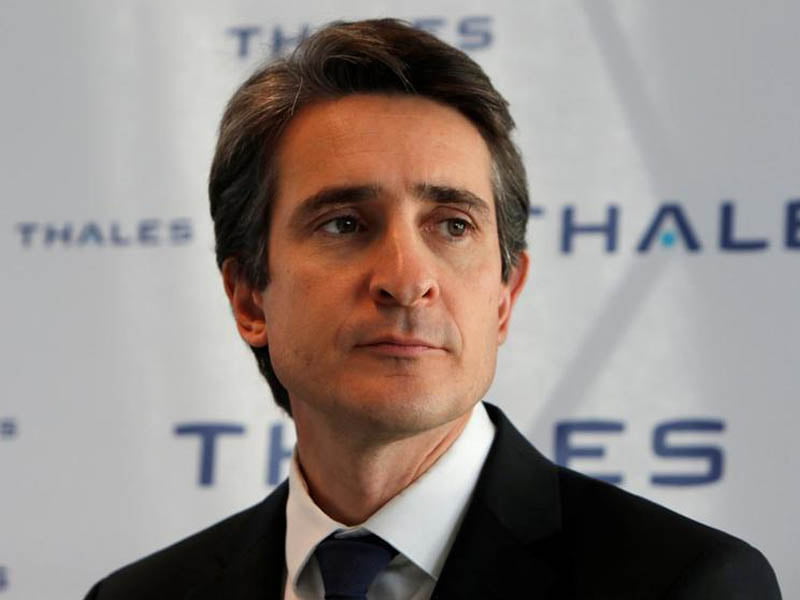Thales is hiring up developers for its Australian programming centre to help build an ambitious air traffic control system that will cover 11 per cent of the globe’s airspace as the group investigates the looming problem of how to manage swarms of delivery drones.
The French transport, aerospace, defence and aviation systems heavyweight inked a deal with the Federal government in February to build the $1.2 billion Onesky project, a combined civil and military ATC system that will supervise Australasian air space as far away as the middle of the Indian ocean.
The project is funded by Airservices Australia and Defence.

Local software development and support for Onesky will come from the Thales centre of excellence in Melbourne – one of only two in the world, the other being in Paris.
“It will grow, of course, because of the size of the (Onesky) project,” said Thales chief executive and chairman Patrice Caine. “The centre of excellence will expand and grow and beyond Onesky, [and] it will give the centre more momentum to address export markets.”
“It’s a joint ambition with the Commonwealth of Australia,” said Mr Patrice adding local jobs would also be created along the Onesky supply chain. Presently, Thales has more than 3000 employees in Australia.
Mr Patrice was speaking at a Thales cyber security media event in Paris where the company was spruiking its cyber chops. Thales has Euro 500 million in cyber revenue that’s expected to grow 10 per cent in 2018 and already employs 5000 cyber engineers worldwide.
Onesky will need cyber hardening of its own and Thales was demoing its ATC and airport security systems at the Paris media event.
Onesky has had its problems getting over the finish line and faced criticism from the Australian National Audit Office last year over value for money, as well as being put on the Defence Department’s Projects of Concern list, from which it has now been removed.
The deal was expected to close in 2015 for a 2021 completion date but will now not likely be fully operational until 2023 or beyond.
Mr Caine defended the drawn out deal signing process, saying it was better to hit the start line late but with “common understanding”.
“The project has taken a bit of time not because of difficulties but because of complexity. It’s the first time in the world that civil and defence air traffic will be managed by the same system – two different types of operators under the same system
“The level of complexity is very, very high. That’s why it has taken several years to make sure that when we start we start on an extremely precise and common understanding with the two customers and ourselves.
“I think it was a wise decision to take a bit more time before, to save time after.”
He said the first stage of the project would be completed “beyond 2020” but would give no further guidance on the project’s completion citing customer confidentiality.
Meanwhile, Thales is eyeing the age of the drones and the problems of managing swarms of autonomous aircraft that would swamp the processing power of human air traffic controllers.
Mr Caine said that while there was no market desire at the moment to eliminate human ATCs, the coming of mass drone operations such as those envisaged by Amazon and others presented a whole new ATC challenge.
There is one key challenge that will need machines making decisions on behalf of human beings, which is the insertion of UAVs just because of the number of flying objects that potentially, once they are authorised, would be flying at the same time in a given airspace.
“It is not humanly possible to manage thousands if not millions of objects flying at the same time,” said Mr Patrice, adding that drone ATC would rely on machines rather than humans.
“We have started to work on this key challenge,” he said. “We need to demonstrate that the AI becomes certifiable which is not the case at the moment.”
He said the level of certainty in an AI system managing swarms of UAVs needed to be on a whole other level to present day systems.
Mistakes common in say present day AI driven object recognition systems were unacceptable in physical environments where safety was paramount, he said.
“That’s why we need what I call explainable AI where if the machine gives a wrong answer we can explain why. The second step is developing certifiable AI where you can certify up to a level of probability,” he said.
Such systems could be needed within the next five years, Mr Patrice said and pointed to demand from China
“Why China? Because there is huge pressure coming from the likes of Alibaba. These big boys want to deliver parcels by drones. They want to demonstrate the benefits and show they are one step ahead of the competition.”
“As these players are very powerful there is high pressure on the civil aviation authority in China to find a solution,” said Mr Patrice adding that systems involving Thales already managed 60 percent of China’s airspace.
Thales is casting around for a site for an Asia located digital factory to support digital transformation efforts in the region.
Mr Caine did not disclose where it would be, although he did say Australia and India were potential candidates for the next digital factory. The decision on the site for the digital factory will later this year.
Stuart Kennedy traveled to Paris as a guest of Thales.
Do you know more? Contact James Riley via Email.
